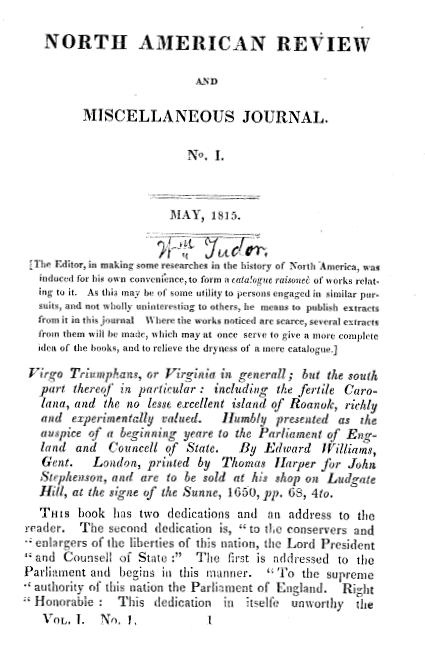--
We have been traipsing through the history of the U.S., before and after the Revolution which is coming upon its 250th anniversary. Having started our work with the Cape Ann venture that was documented by Dr. Frank with regard to the families involved in the 1623 deal, our attention spread out in all directions.
Of course, there was the sea, and Gloucester is looking to celebrate starting in January of 2023. Salem will have to wait until 2026. In the meantime, there will be a steady stream of MA towns and cities that can claim attention. Bringing in the outlying areas in New England will increase the scope tremendously. Then, heading south, we find that Virginia and its surrounds was New England, too. In other words, families from the same origins, many times. Western movement started real early with western MA and the State of NY being considered wilderness. Ohio was already being settled by the time of the Revolution.
Naturally, we need to look north, too, as we pay attention to the area that split from the Patriot's view and kept their association with the Crown. Dynamics, there, played out for a few decades. The northern border of the U.S. was not established until the 1840s by which time there was a major focus on covering the area from sea to sea in the U.S.
Several themes arose. One was the American dream. This post is about that. Too, we had a frontier century where a generation or two were lost sight of in terms of the paper that is important to the genealogist. There are so many examples to consider, but the reality of the situation is demonstrated by the Daughters of the American Revolution having a special group to help people work these types of issues in order to apply for membership. It goes under the title of "America 250!" and supports, as well, the U.S. initiative of America250.
In our look at this country and its start, we have covered the bases with respect to the activities of people, including those of the regular folk along with those of the more privileged. As we research, we always keep in mind four things: New England, Massachusetts, Essex County, Cape Ann. The first has a long reach, as we can show with innumerable examples. Say, Lawrence, KS, started by a group (including men and women folk) who journeyed in the 1850s out to the area, had lunch on Mount Oread, made their oaths to support the place, left a few hardy souls, and returned to their homes. Mind you, the transportation, at that time, was not yet modern.
Too, though, this gets us to the theme of the post: New England left its heart in the middle of the country. The North American Review (NAR) is the best argument that we can find for that.
In our work, we looked at various literary print attempts, such as The Massachusetts Magazine and the Southern Literary Messenger. We just ran across the NAR while researching Harvard's Head (long story). Mostly that seemed to be drudgery until we ran into the consecutive terms of Jared Sparks and James Walker. We are not done, yet, with our look at those gentlemen but expect them to be central to our various themes (not yet specifically itemized but apparent implicitly via all of the posts that we have done).
But, later in his life, Jared Sparks was an editor at NAR which started in 1815, in Boston. On researching this magazine, we found much to ponder. The Community of Literary Magazines and Presses (CLMP) gave a brief summary. See Wikipedia for another bit of history. The NAR published continuously in Boston until 1940. It was rescued and printed out of Cornell College in Iowa for a time. Currently, its support is the University of Iowa which has a noted history in literature and its purpose.
On a quick look, all of the issues of this magazine past a date (need to determine) are digitized and available several places (Hathi Trust, Google Docs, Archive[dot]org, and elsewhere). The early issues (1815 and on) are available. Sampling some of the topics over the 200+ years showed that this magazine was American, in spirit, and deals with the dream and many other things.
That brings up the topic of coming posts. Boston allowed the heart of American to move west. We will get into that. Leaving what, though? The Atlantic left, too.
A huge motivation? AIn't will be making huge claims in the near future. There is nothing related to this stuff that is beyond literary freedom and marketing. Now, mind you. Robots are something different. We are not talking working mechanisms. Nope, we are talking mere bitstreams founded upon hardware that we can see upon which is software and firmware. These things allow 'buckets of bits' to spawn 'airs' (chimeraic ethers) that pull the brain toward dynamics that need to be understood.
Analog? Look at Jung's take on the mania of UFOs with respect to things like a collective unconscious or other types of influential properties that science has not yet tackled.
Now, one might say, Friday night musings? Nope. The Thomas Gardner Society is stepping up to make truth engineering its interest as one prime way to handle this type of mischief which might seem to be rational and conscious, given the mathematics involved, but is not. Diving (the use of deep learning is really a misnomer for AIn't) deeper can show just how illusory is this stuff. But, those involved are of several types.
Where is the platform for discussion?
Remarks: Modified: 09/03/2022
09/03/2022 -- Started the edits. Completed, for now.

No comments:
Post a Comment